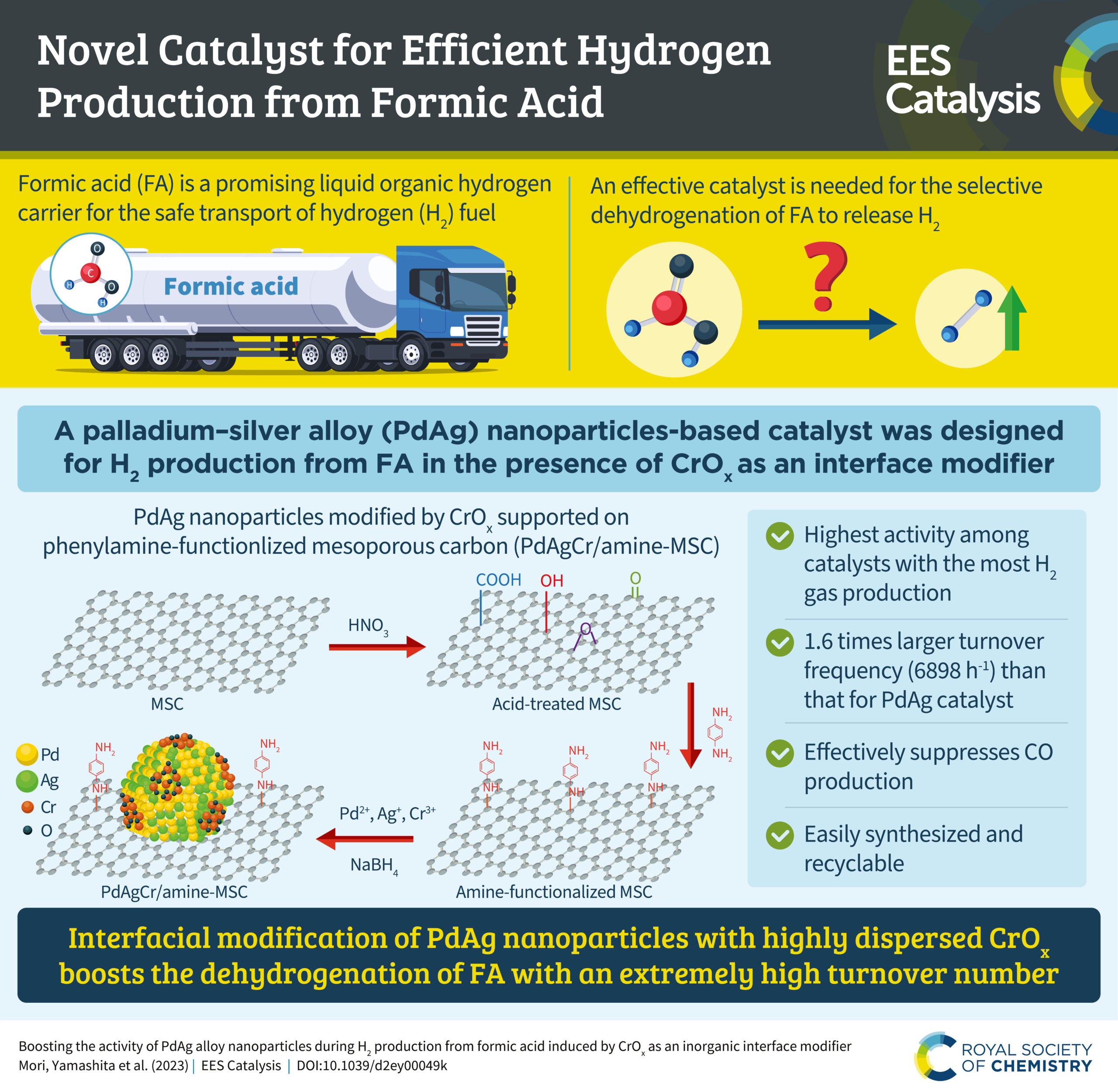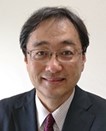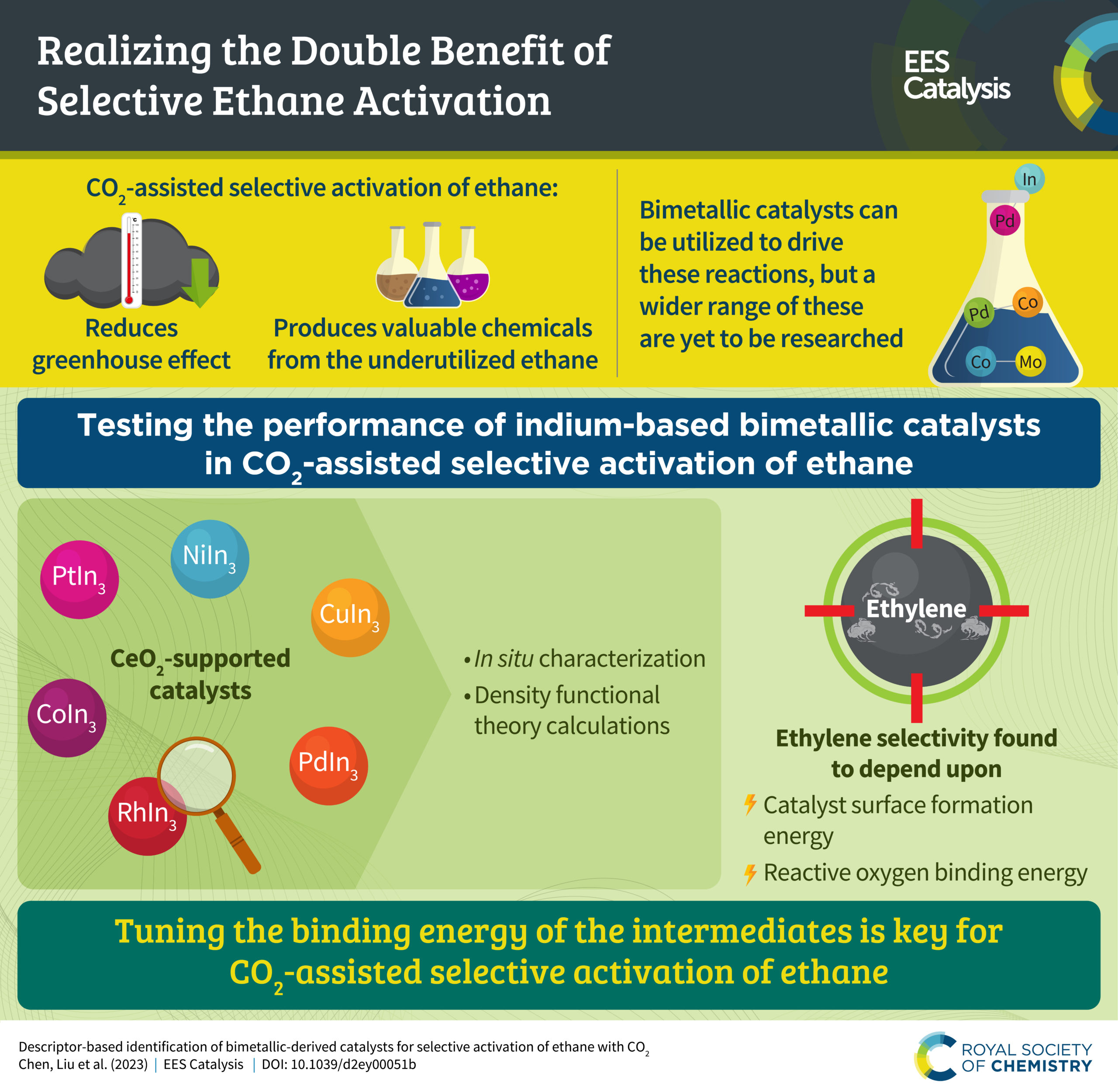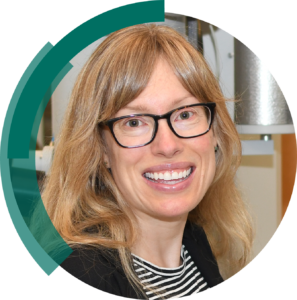Novel Catalyst for Efficient Hydrogen Production from Formic Acid
Boosting the activity of PdAg alloy nanoparticles during H2 production from formic acid induced by CrOx as an inorganic interface modifier
Kohsuke Mori, Tatsuya Fujita and Hiromi Yamashita
EES. Catal., 2023,1, 84-93 DOI D2EY00049K

Meet the authors

Kohsuke Mori received his PhD degree from the Graduate School of Engineering Science at Osaka University in 2003. In 2004, he joined at University of California, Berkeley, as a postdoctoral fellow. He moved to the current faculty in 2005 and then became an associate professor in 2009. His current research interests focus on metal and alloy nanoparticle catalysts to establish clean and environmentally-friendly carbon-neural processes, hybrid photocatalysts based on visible-light-responsible MOF, and the fabrication of catalytic reactor by 3D printing technique.

Tatsuya Fujita received his bachelor’s degree from the School of Engineering at Osaka University in 2022. He is now a first grade of master course student in Graduate School of Engineering at Osaka University. His research topic is the development of highly efficient heterogeneous catalysts for the use of formic acid as a promising hydrogen energy carrier.

Hiromi Yamashita has been a professor at Osaka University since 2004. He received a PhD degree from Kyoto University in 1987. He was an assistant professor at Tohoku University and an associate professor at Osaka Prefecture University. He was also a visiting research fellow at the California Institute of Technology. He is now the president of Catalysis Society of Japan (2019–2020) and the president of Asia-Pacific Association of Catalysis Societies (2019–2022). His research interests include the design of single-site photocatalysts and nanostructured catalysts.
An interview with the authors
What aspect of your work are you most excited about at the moment and what do you find most challenging about your research?
The most exciting thing is to discover something unexpected but really new, and the most difficult thing is to observe the actual catalytic reaction and imagine what is true.
How do you feel about EES Catalysis as a place to publish research on this topic?
We believe EES Catalysis will provide a powerful platform for presenting cutting-edge research in this fascinating area.
Can you share one piece of career-related advice or wisdom with other, early career scientists?
To do what you want and trust your intuition no matter what.










